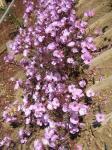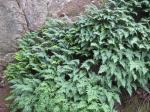My Nonprofit Reviews

pbe211
Review for California Native Plant Society, Sacramento, CA, USA
Starting in 2011, CNPS has taught me what native plants are, that they're important in their own right, and that they're important for pollinators and whole ecosystems. My local Yerba Buena Chapter (of San Francisco) has taught me there are hundreds of plants native to San Francisco. So I have given my backyard and even some neighborhood plots back to native plants, using plants with a local heritage (i.e., not from other parts of California).
I've also volunteered with CNPS to conduct plant sales, do community outreach and to remove weeds from Significant Natural Resource Areas managed by Rec and Park. Weeds, habitat conversion/fragmentation/degradation and climate disruption are major threats to the survival of California's biodiversity. And California is one of 36 internationally recognized biodiversity hotspots.
CNPS has taught me that native plants are environmentally correct and require little inputs. My neighbors plant non-native and some invasive plants. However, native plants are drought tolerant, provide food and shelter that wildlife co-evolved with them, and may even be considered rare, threatened or locally significant. I am proud to have given back habitat to these indigenous plants. In the photos from my backyard are purple color fiesta flower, miner's lettuce (the plant that sustained Gold Rush miners) and wild cucumber (not edible); pink color clarkia, aka farewell-to-spring; and a fern, California polypody.
I think it's important for us to support CNPS, because CNPS has positive impacts on our environment. Virtually all other human activities have negative impacts. While we can try to minimize our negative impacts on the environment, we can also increase our positive impacts. CNPS has 35 chapters, each one specializing in plants indigenous to its area. At the State level, CNPS strives to conserve what's left of open spaces.



